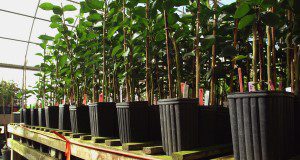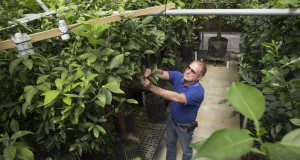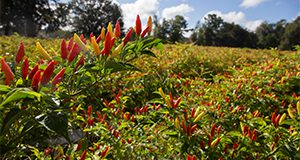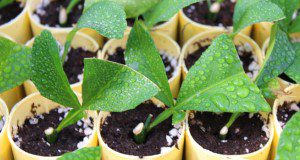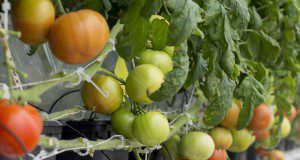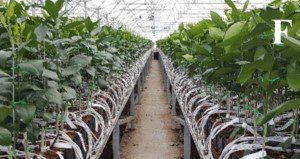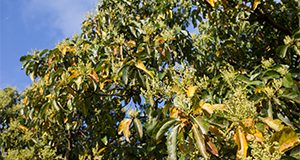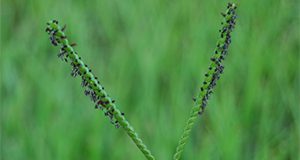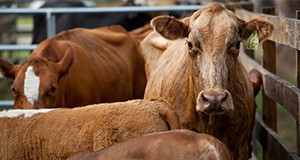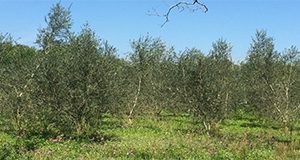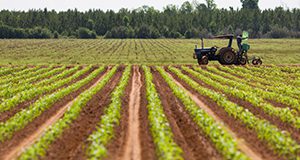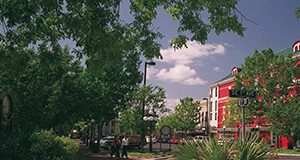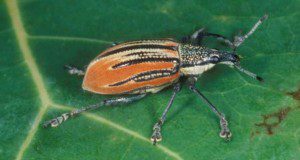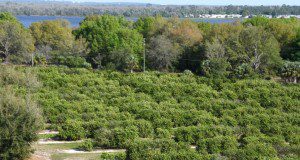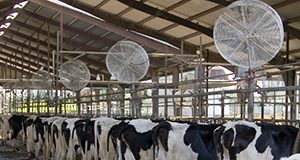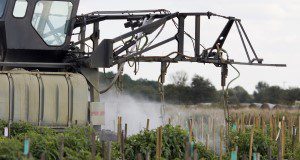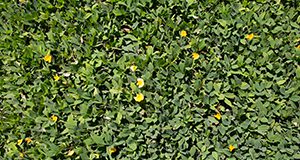The large number of different rootstock varieties currently available for citrus production in Florida is unprecedented. This new 4-page article, chapter 4 of the forthcoming UF/IFAS Citrus Nursery Production Guide, provides information on rootstock uses in Florida, rootstock propagation, and the impact of tissue culture, as well as factors to consider when deciding which rootstock to plant. Written by Ute Albrecht, Manjul Dutt, and Jude Grosser and published by the UF/IFAS Horticultural Sciences Department.
https://edis.ifas.ufl.edu/hs1340
Category: Agriculture
Seed and Budwood Production, Transport, and Conservation
The Florida citrus industry maintains a high demand for trees for replanting and resetting, as well as an interest in new releases of rootstocks and scions with improved disease and abiotic stress tolerances. One of the main constraints for liner production in great numbers is time. The consensus among citrus nurseries is that it takes two years to produce enough quantities of budwood to establish seed block trees when a new interesting rootstock is produced. This new 3-page article addresses the practices and challenges of producing seeds and budwood in Florida. This article, chapter 7 of the forthcoming Citrus Nursery Production Guide, was written by Fernando Alferez and Mireia Bordas and is a publication of the UF/IFAS Horticultural Sciences Department.
https://edis.ifas.ufl.edu/hs1336
Risk Management Planning for Agricultural Business Owners
Risk identification is the beginning point for risk management planning because solution identification begins with knowledge of the problem. This 4-page document presents questions to consider regarding production risk, price or market risk, financial risk, legal risk, and human risk. Written by Martie Gillen and Beatrice Pierre, and published by the UF/IFAS Department of Family, Youth and Community Sciences, August 2019.
http://edis.ifas.ufl.edu/fy1485
Citrus Rootstock Propagation: Traditional Techniques and Recent Advances
Commercially grown citrus trees are usually composed of two parts: 1) the scion, which is the aboveground portion of the tree that produces the fruit, and 2) the rootstock, which comprises the root system and the lower portion of the trunk. This new 4-page publication, chapter 6 of the forthcoming Citrus Nursery Production Guide, discusses three kinds of rootstock propagation: seed, cuttings, and tissue culture. Written by Ute Albrecht, Lorenzo Rossi, and Mongi Zekri and published by the UF/IFAS Horticultural Sciences Department.
https://edis.ifas.ufl.edu/hs1329
Current Status of Research, Regulations, and Future Challenges for CRISPR Gene Editing in Crop Improvement
Recently, new plant-breeding technology such as CRISPR gene editing has provided the potential to substantially improve crop breeding in agriculture. Considerable efforts have been devoted to apply this gene-editing technology in modern agriculture to increase crop yields and improve the quality of food ingredients, especially by many of the major agronomic seed-producing companies. In this new 4-page article, we outline the recent research updates and regulations on gene editing in crop improvement. Written by Sadikshya Sharma, Heqiang Huo, and Seonghee Lee and published by the UF/IFAS Horticultural Sciences Department.
https://edis.ifas.ufl.edu/hs1334
Preparing for One-on-One Qualitative Interviews: Logistics
This new 4-page publication provides an introduction for researchers and evaluators wishing to use qualitative methods of interviews and focus groups. The document covers a short background on qualitative methods versus quantitative methods and offers practical tips on piloting your questions, preparing your materials, and conducting the interview or focus group. Written by Kathryn A. Stofer and published by the UF/IFAS Department of Agricultural Education and Communication, this EDIS article is designed to accompany AEC675, Preparing for One-on-One Qualitative Interviews: Designing and Conducting the Interview.
https://edis.ifas.ufl.edu/wc339
Preparing for One-on-One Qualitative Interviews: Designing and Conducting the Interview
This new 4-page document provides instructions on designing the question guide and conducting one-on-one interviews for qualitative data collection. It covers common types of interviews and their uses as well as strategies to use when asking the questions of the interviewee. This document is designed to accompany AEC676, Preparing for One-on-One Qualitative Interviews: Logistics. Written by Kathryn A. Stofer and published by the UF/IFAS Department of Agricultural Education and Communication.
https://edis.ifas.ufl.edu/wc338
Stock Plant and Tree Production: Irrigation and Fertilization
Citrus tree production in nurseries can be divided into three stages: production of rootstock liners, transplant of rootstocks into larger containers, and bud grafting. The objectives of this new 6-page publication of the UF/IFAS Horticultural Sciences Department are to provide general information on irrigation and fertilization for production of citrus nursery trees in seedbeds, nurseries and budwood multiplication blocks. This article, written by Rhuanito Soranz Ferrarezi, is chapter 8b of the forthcoming Citrus Nursery Production Guide.
https://edis.ifas.ufl.edu/hs1333
The Value of Tropical Plant Diversity
This new 5-page document discusses plant diversity at the UF/IFAS Tropical Research and Education Center, environmental factors and human activities affecting these plants, assemblages of species based on levels of disturbance, human choice, and other factors, and the diverse needs these plants meet. Written by Cliff G. Martin and Zachary T. Brym, and published by the UF/IFAS Agronomy Department, June 2019.
http://edis.ifas.ufl.edu/ag435
Bahiagrass (Paspalum notatum Flueggé): Overview and Pasture Management
This 10-page document discusses bahiagrass forage cultivars, forage production, nutritive value, animal performance, planting, pasture renovation, management, and more. Written by Marcelo Wallau, Joao Vendramini, José Dubeux, and Ann Blount, and published by the UF/IFAS Agronomy Department, revised July 2019.
http://edis.ifas.ufl.edu/ag342
Estimating Herbage Mass on Pastures to Adjust Stocking Rate
This new 6-page document explains methods to measure forage mass and utilize that information to estimate an adequate stocking rate. Written by Jose Dubeux, Marcelo Wallau, João Vendramini, Liliane Silva, Jane Griffin, Nicolas DiLorenzo, and Erick Santos, and published by the UF/IFAS Agronomy Department, June 2019.
http://edis.ifas.ufl.edu/ag434
Develop Your Own Florida Olive IPM Plan
To remain in optimal health and produce optimal yield, olive trees need excellent nutrition, the right irrigation, and good care to help them stay healthy so that they can withstand injury from pests and diseases. This 10-page fact sheet written by Morgan Byron, Eleanor Phillips, and Jennifer L. Gillett-Kaufman and published by the UF/IFAS Entomology and Nematology Department touches on some aspects of olive tree health that will help improve your trees' natural resistance to pests and pathogens. At the end of the guide is a monthly care and observation schedule to help you recognize when you should begin scouting for key pests and when important grove management decisions should be made.
http://edis.ifas.ufl.edu/in1251
Understanding Investment Analysis for Farm Management
Investment decisions are among the most important decisions growers make. In many cases, those investments are in capital assets such as establishing a new orchard or purchasing a new piece of equipment. The process for evaluating those investments is called investment analysis or capital budgeting. This 4-page fact sheet written by Julio Cruz and Ariel Singerman and published by the UF/IFAS Food and Resource Economics Department reviews net present value and the internal rate of return, the two main criteria for decision making when evaluating a decision to invest in a capital asset.
http://edis.ifas.ufl.edu/fe1060
Values and Ecosystem Services of Gainesville’s Urban Forest in 2016
The urban forest is a crucial factor in the well-being of a community because of the aesthetics, health benefits, and cost-savings that it provides. The urban forest is our habitat, and we must manage it in ways that will provide the benefits we need and desire. This 3-page fact sheet written by Michael G. Andreu, Caroline A. Hament, David A. Fox, and Robert J. Northrop and published by the UF/IFAS School of Forest Resources and Conservation describes an urban forest ecological analysis conducted in 2016 in Gainesville, Florida, by the University of Florida in partnership with the Parks, Recreation, and Cultural Affairs Department to quantify the vegetation structure, functions, and values of the urban forest.
http://edis.ifas.ufl.edu/fr414
Children’s Citrus Activity: Diaprepes Root Weevil
This new two-page children’s activity sheet features pictures of Diaprepes root weevil larva and adults as well as feeding damage. Page two includes a maze. Written by Lauren M. Diepenbrock and Jamie D. Burrow and published by the UF/IFAS Extension 4-H Youth Development program.
http://edis.ifas.ufl.edu/4h403
Children’s Citrus Activity: Citrus Counting
Florida is well known for its citrus industry, valued at over eight billion dollars, and is one of the top citrus-producing states in the United States. This new one-page children’s activity sheet about Florida citrus includes an activity for students learning to count and match. Written by Jamie D. Burrow and Ariel Singerman and published by the UF/IFAS Extension 4-H Youth Development Program.
http://edis.ifas.ufl.edu/4h402
Recognizing Heat Stress in Dairy Cows
In persistent hot, sunny and humid conditions, cows can become overheated and may not produce as well, or may experience health issues. This two-page fact sheet written by Izabelle Toledo and Geoffrey Dahl and published by the UF/IFAS Department of Animal Sciences lists the signs of heat stress in dairy cows.
http://edis.ifas.ufl.edu/an356
Design and Construction of a Constant Head Infiltrometer
This new 8-page document details the construction procedure for a Mariotte siphon constant head infiltrometer using readily available materials. Written by Mahesh Bashyal, Michael J. Mulvaney, and Eban Z. Bean, and published by the UF/IFAS Agronomy Department, June 2019.
http://edis.ifas.ufl.edu/ag433
Pesticide Recordkeeping Form for Florida Applicators
This new 5-page document provides a form containing the required elements to include on a record of pesticide application for meeting the restricted use pesticide and Worker Protection Standard (WPS) requirements. An example application record and an explanation of the required elements is provided. This is not a required form because there are other methods to keep records if they contain the required information. Handwritten notes, electronic records, and other recordkeeping software systems are also acceptable. Written by Frederick M. Fishel and published by the UF/IFAS Agronomy Department.
http://edis.ifas.ufl.edu/pi280
Methods of Forage Moisture Testing
Determining forage moisture is an essential procedure for estimating forage mass in pastures, determining harvesting or baling point for preserved forages, and calculating dry matter of feedstuff for total mixed rations. This 3-page document discusses methods and pieces of equipment available to estimate forage moisture. Written by M. Wallau and J. Vendramini, and published by the UF/IFAS Agronomy Department, revised June 2019.
http://edis.ifas.ufl.edu/ag181
